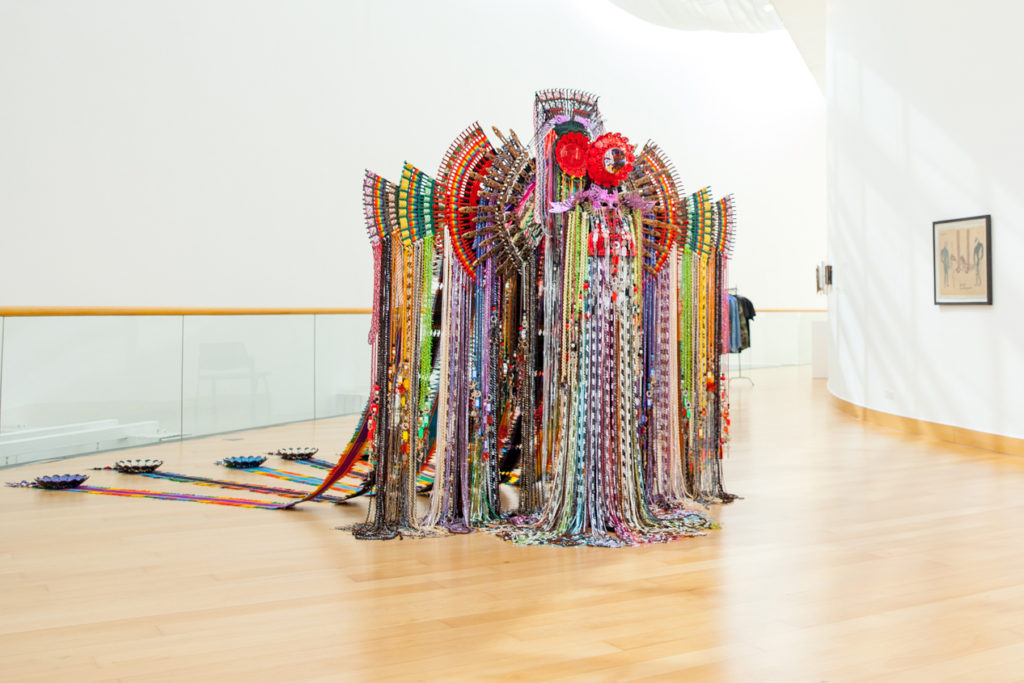“As long as the materials can be woven into my work, I will use them.”
– Anne Samat
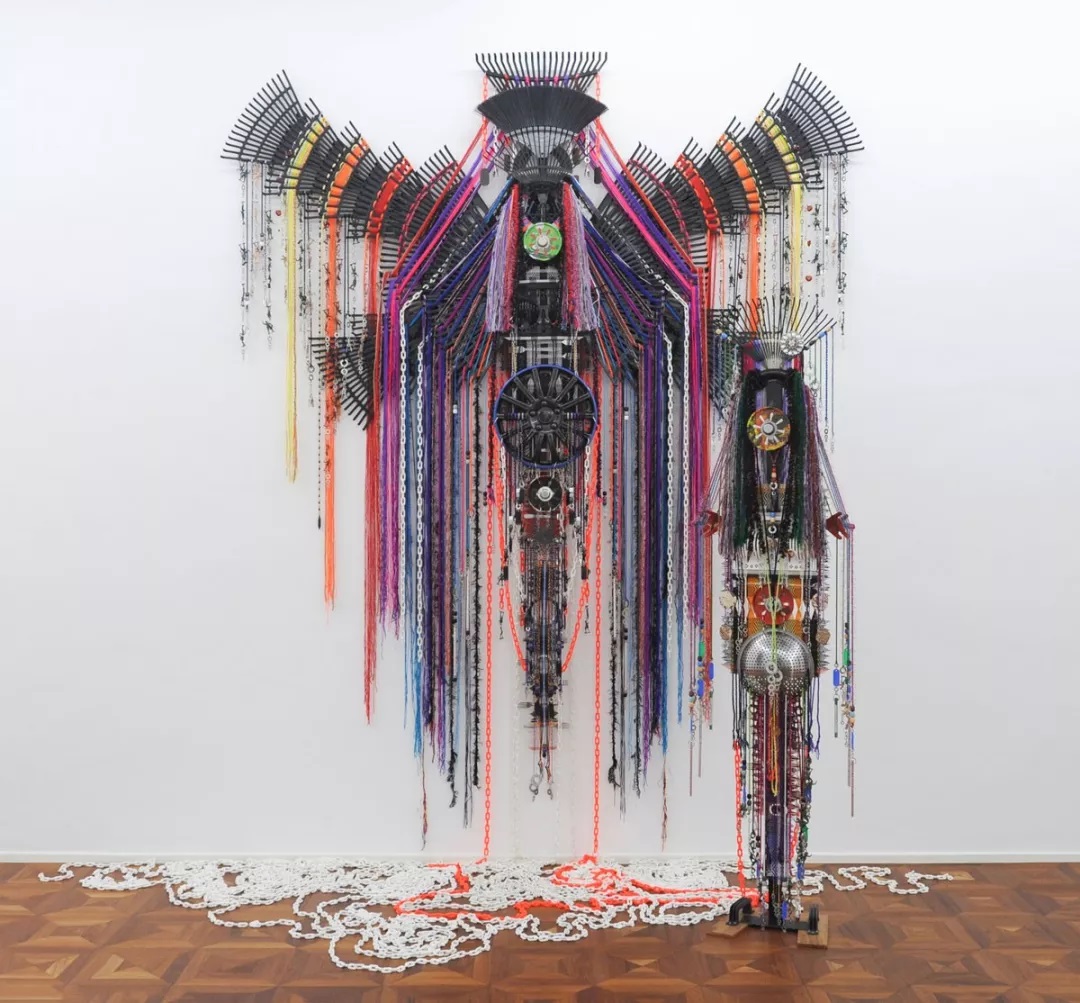
Anne Samat, “Freedom 1… to be Me”, 2017 | Image courtesy of artist and Richard Koh Fine Art
Anne Samat’s art life is the same as her work which is bold, brave and colourful. As she chose a different way, her work always makes us unforgettable and intriguing. Samat transcends the border of traditional textile. Her work shows the combination of art and textile, modern and tradition, masculinity and femininity. In Samat’s colourful work, it is not unusual to find unexpected materials, including rakes from gardens, car wheels, filter containers in kitchens, zippers, abandoned computer hardware and female underwear. The neglected materials in our daily life are ingeniously integrated to be part of Samat’s work and into a piece of art installation woven by her skillful hands.
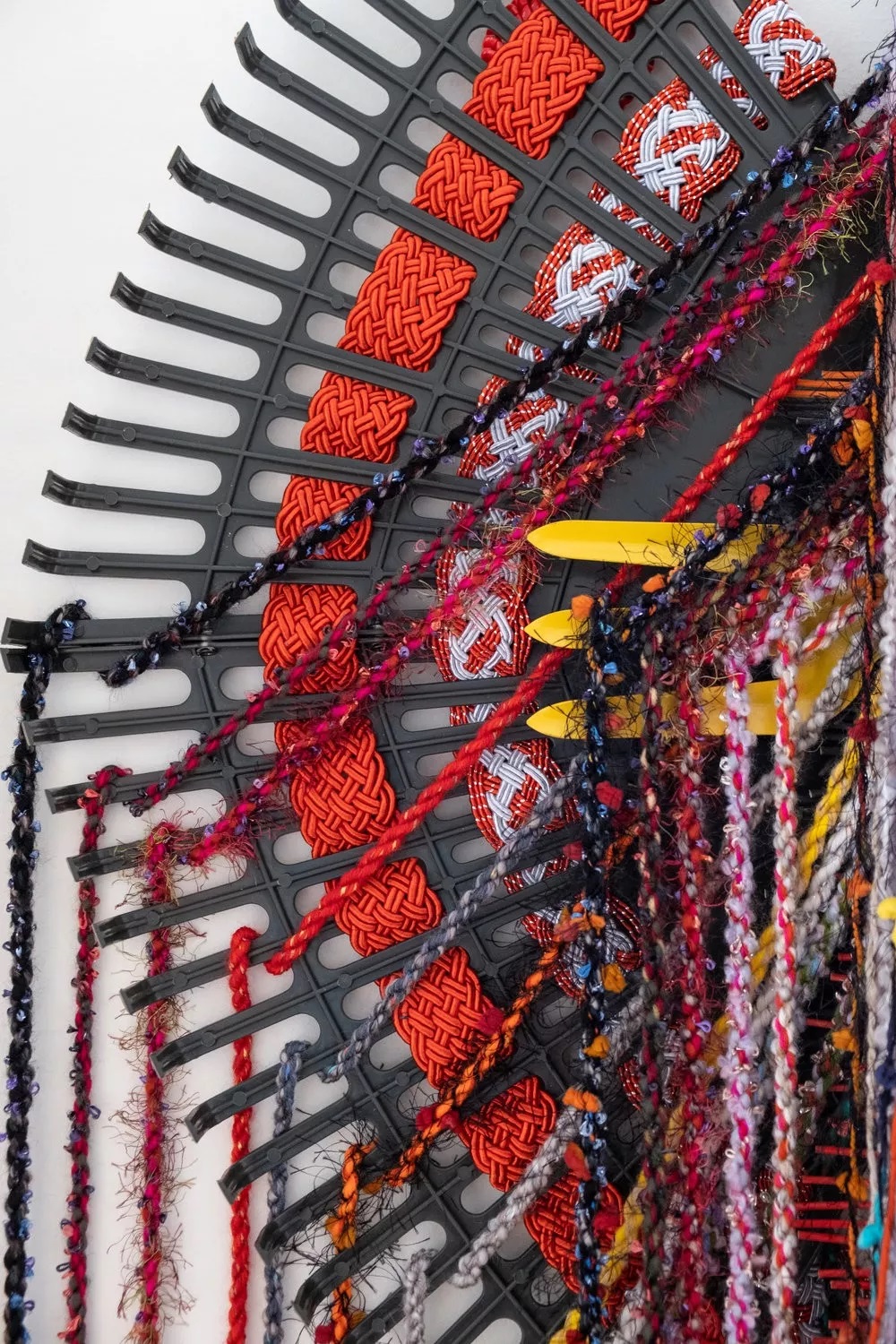
“Che Ya: The Greatest Love” (detail) | Image courtesy of artist and Richard Koh Fine Art
Samat selected Textile as her major in university as she would like to learn new knowledge in a completely strange field. She succeed and became the well-known figure in this field. She was selected as one of the top ten female artists in Malaysia during 2013. She was also ranked as the second on theartists to watch list in 2019 by CoBo Social, a famous platform for art collectors in Asia. Thanks to her skillful craftsmanship with using non-traditional materials, Samat became the pioneer in modern weaving art field. By integrating Songket, traditional Malaysian fabric to her own interpretation of textile, she continues to break through the boundaries of traditional weaving. Samat’s infinite creative ideas come from ancestry traditional myths and rich Malaysian culture. Intricate weaving, synthetic fibers, rattans and other materials in daily life are used to create the colourful totem by Samat. From her every single piece of work, the vistors are surprised by her creativity and skill which worth spending time to observe and appreciate.
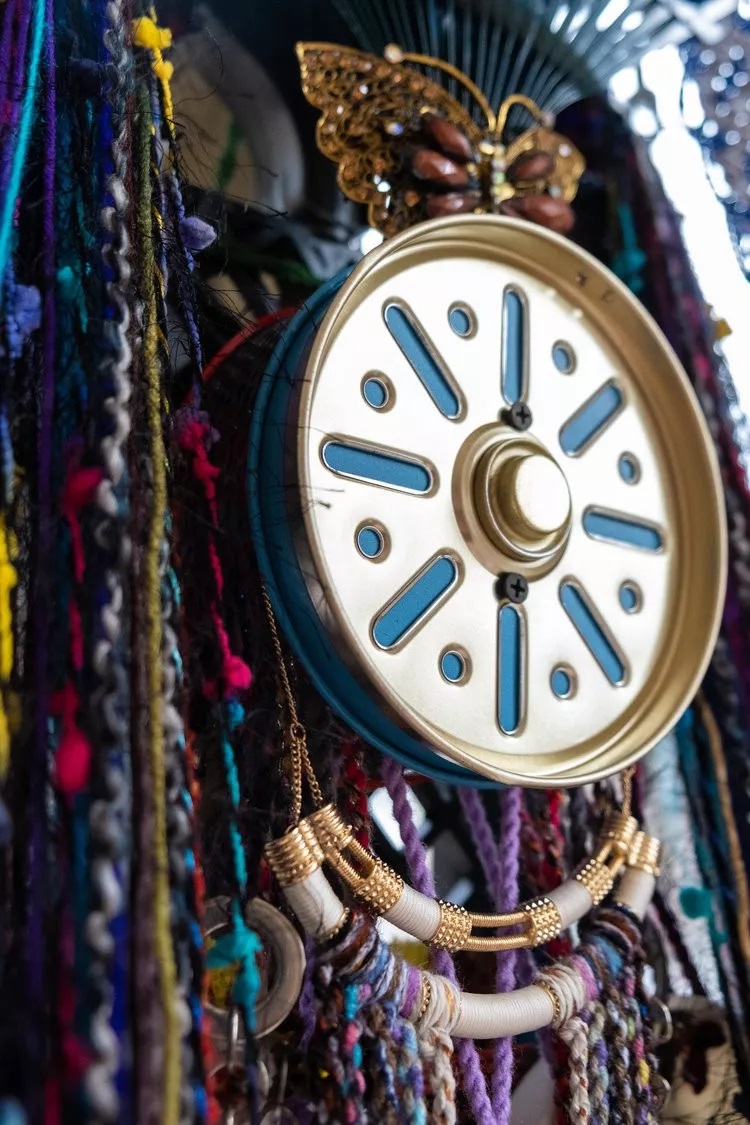
“Then Along (Family Emblem)” (detail) | Image courtesy of artist and Richard Koh Fine Art
Apart from the perfect combination of “new” and “old”, “masculinity” and “femininity” is another crucial theme for Samat to explore in her work. The nature of materials can be categorized as masculine or feminine regarding to Malaysian traditional culture. Metals represent masculine while textiles represent feminine. During some of the Southeast Asian wedding ceremonies, men and women exchange metals and fabrics symbolizing the unionsbetween two sexes. Samat put metals and plastics without particular gendernature in the silk weaving, making her work beyond gender stereotype thatconflicts the regular cognition of binary gender. The incompatible traits reflect the courage and determination of the creator who is not willing to fall into the cliché.
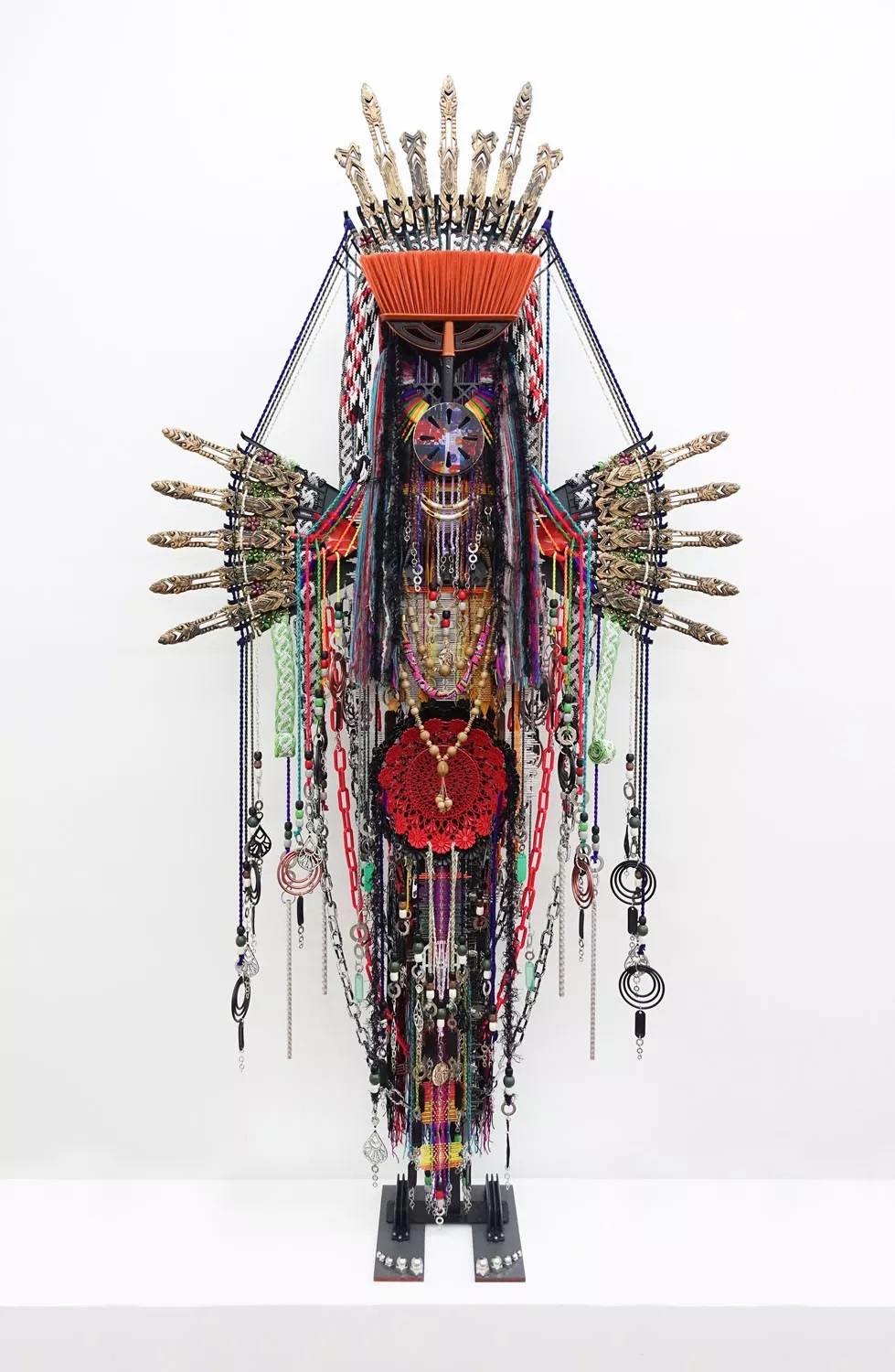
Anne Samat, “Maya”, 2018 | Image courtesy of artist and Richard Koh Fine Art
Before start weaving a work, Samat uses to make a simple draft. After different materials are put together, she lets the work “guide” her during creative process, making the follow-up decisions according to its appearance. She thinks that there should be a certain agreement between her and her work like “Memorandum of Understanding” which shows her respect to the materials used.
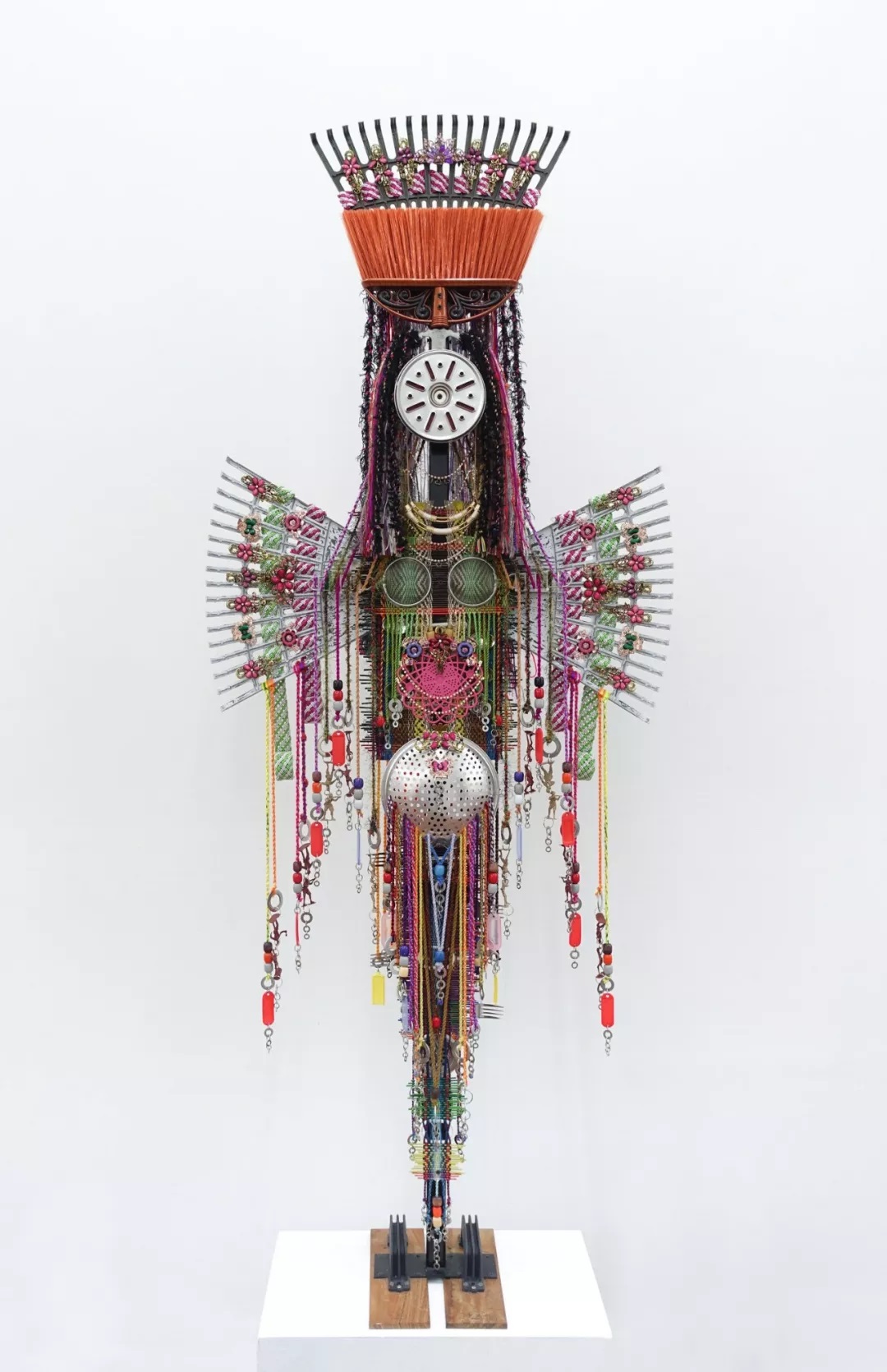
Anne Samat, “The Goddess of Love”, 2017 | Image courtesy of artist and Richard Koh Fine Art
After Samat participated in 2019 Taipei Dangdai, she has begun a 3- month Artist-in-Residence Scheme in Hudson Valley Museum of Contemporary Art since May 2019 to present “Greatest Love”, her first solo exhibition in US.During the invitation of this Artist-in-Residence Scheme, Samat still suffered from the pain after her mother’s death. With the encouragement of her brother, Samat transformed the pain to power and inspiration, presenting this exhibition on the topics of family relationship, gender and tradition.
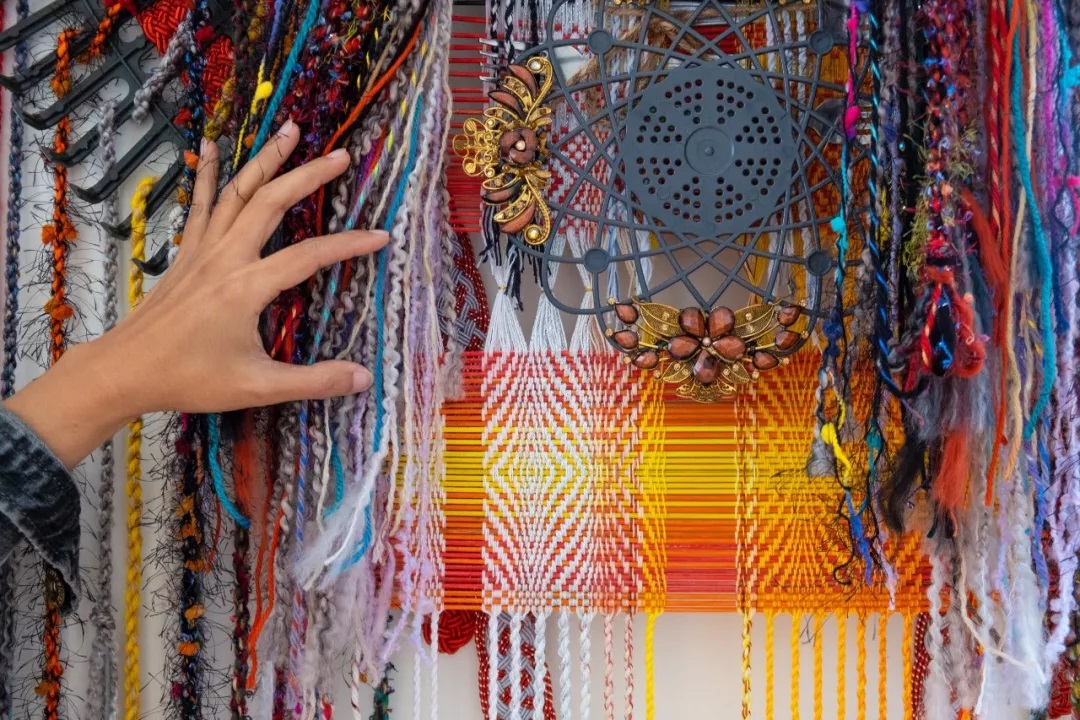
Samat installing her work at Hudson Valley Museum of Contemporary Art | Image courtesy of artist, Richard Koh Fine Art and the Museum
The tools used in gardens link up all the artworks shown in the exhibition “Greatest Love”. The garden represents the place of two genders. In the masculine operational order, the plants are grown and nurtured in the soil in the accordance with the feminine growing pattern. Through careful care, the garden grows in an orderly manner with the changes of the seasons, and the exploration of gender and its mobility is nourished and grown in the exhibition.
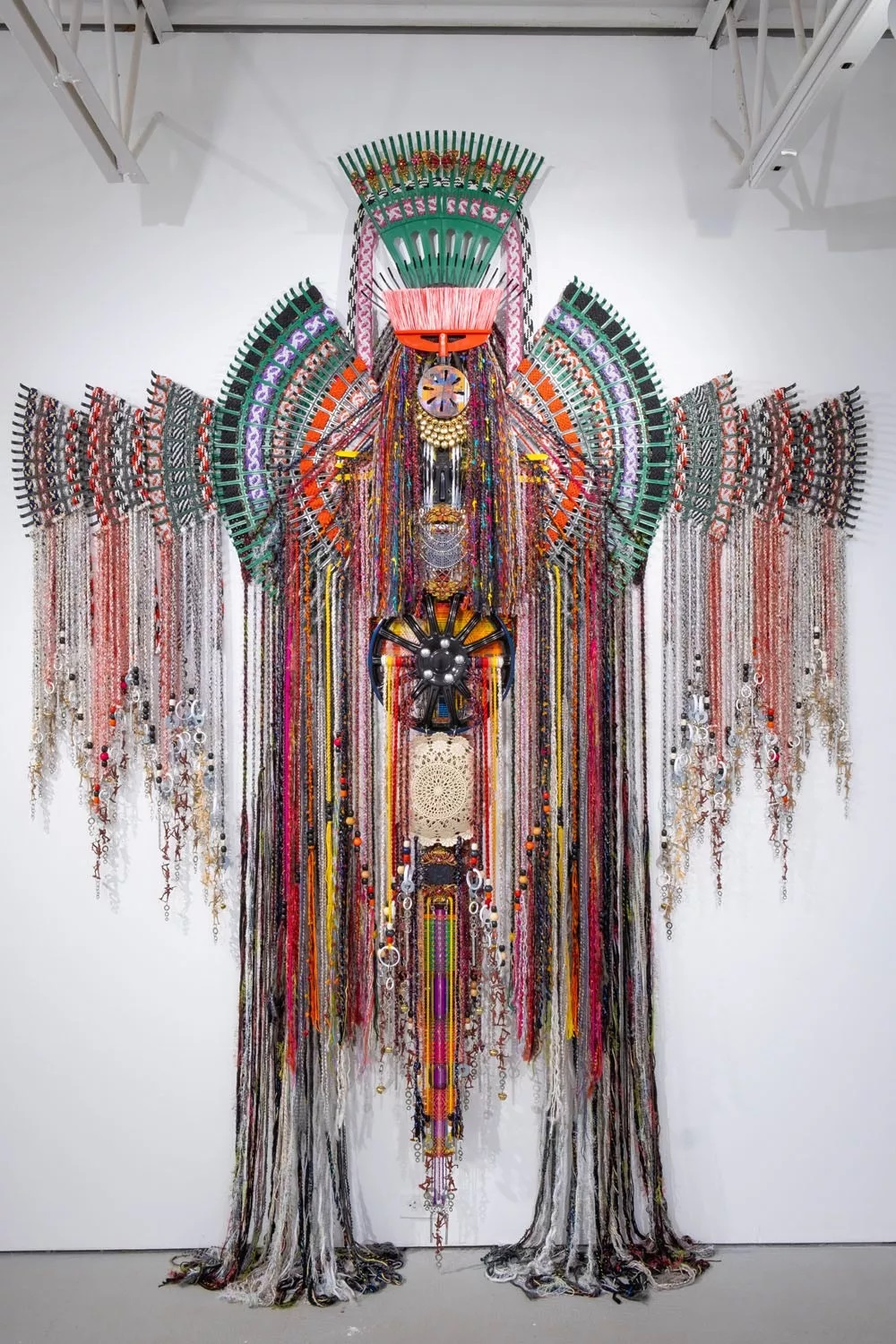
Anne Samat, “Che Ya: The Greatest Love”, 2019 | Image courtesy of artist and Richard Koh Fine Art
The presence of “Che Ya: The Greatest Love” is dedicated to Samat’s mother. As usual, Samat shows her respect to her materials. The targets on both sides of this seven feet height installation like the two arms are opening while the long woven ropes extend to the ground like sleeves and legs. Toys, rings for shower curtains and hardware of washing machines abandoned their original purposes, cuddling with silks and representing the artist’s endless thoughts of her mother.
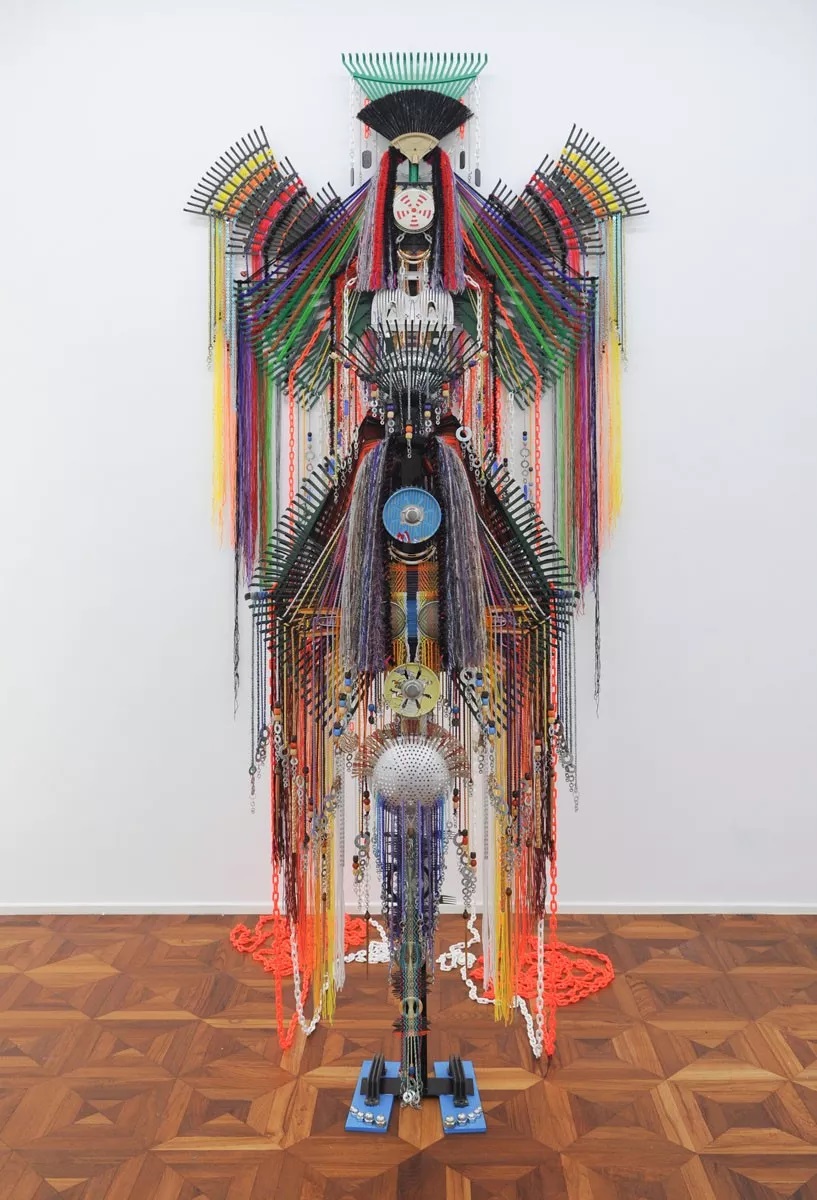
Anne Samat, “Freedom 2 … to be Yourself”, 2017 | Image courtesy of artist and Richard Koh Fine Art
Enhancing textile and art to the next new level, Samat provides a new perspective of exploration in gender.
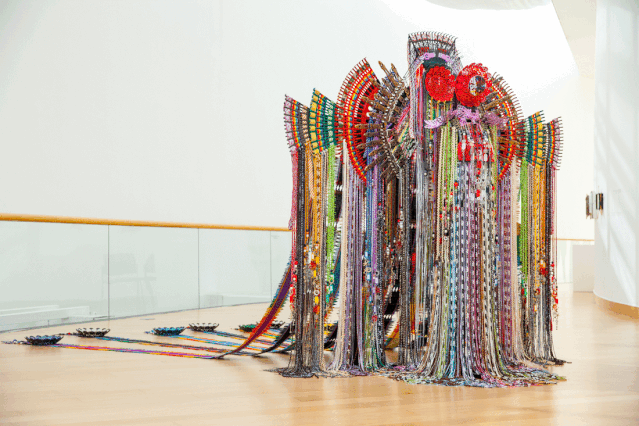
Anne Samat, “Conundrum Ka Sorga (To Heaven)”, 2019 | Image courtesy of artist, Bangkok Art and Culture Centre, and Sunpride Foundation
In the exhibition Spectrosynthesis II, Samat’s “Conundrum Ka Sorga (To Heaven)” is a sculpture work, wearing a gown with six coloured stripes of the rainbow flag. The top side of the gown is vibrant in colour but the underside is a somber monochromatic balance of black and white, representing an imbalance between the mainstream and marginalized communities. The symbol of the legendary phoenix is appropriated by the artist to symbolize the struggles and failures endured by LGBTQ people but all setbacks will ultimately further empower the community like the phoenix rises from ashes, reclaiming their voices.
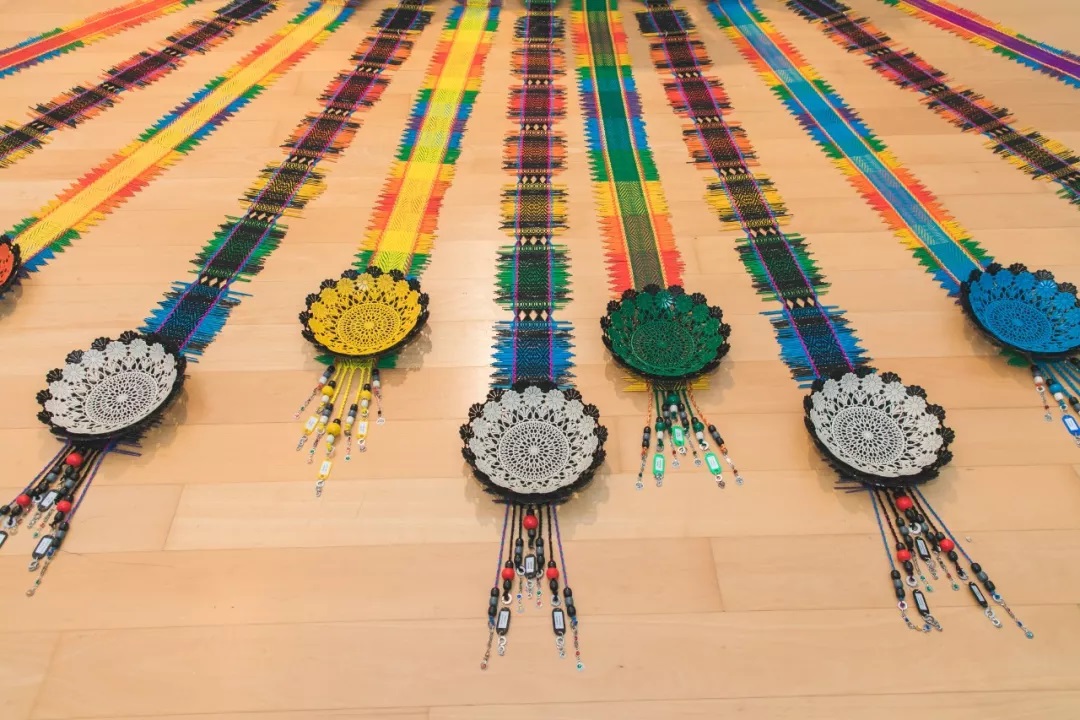
“Conundrum Ka Sorga (To Heaven)” (detail), 2019 | Image courtesy of artist, Bangkok Art and Culture Centre, and Sunpride Foundation
The sculpture is also to remember the sacrifice of past and present advocates of the LGBTQ movement, from civil rights leaders to celebrities. Their names are listed on the bottom of the gown, paying tribute to the forerunners of the movement who have paved the ways for future victories against mainstream hegemony.

